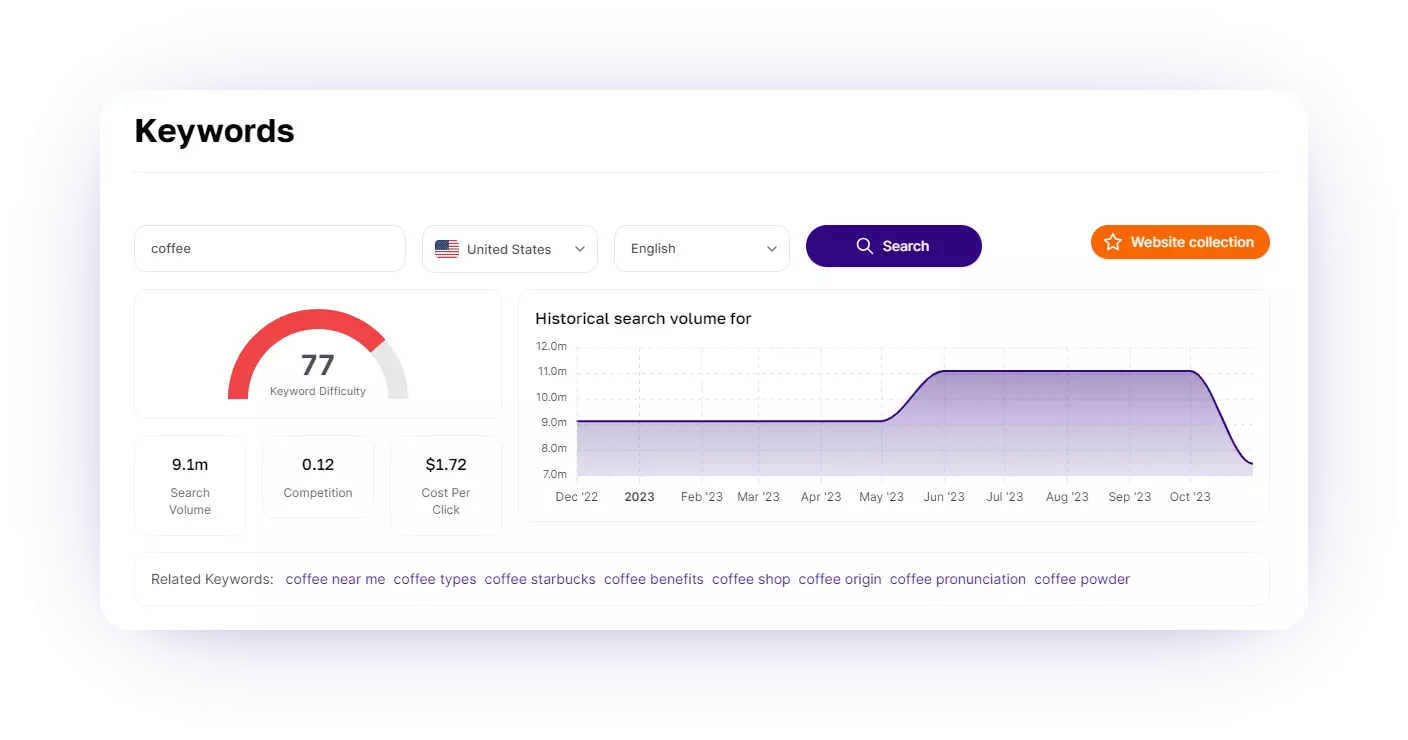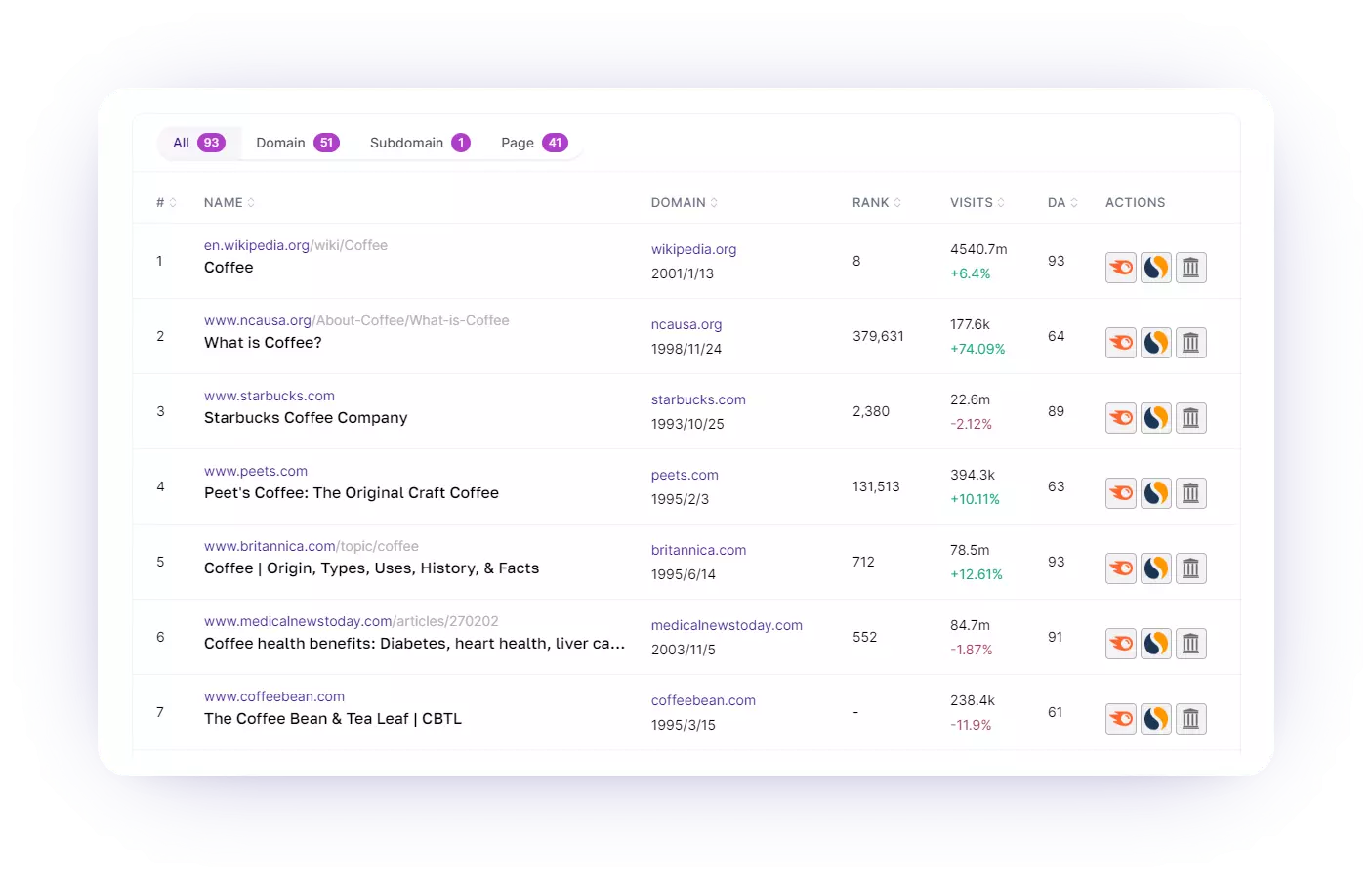
If you own a business website, you're probably familiar with the fundamentals of SEO. However, do you know what is on-page SEO?
On-Page SEO emerges as a fundamental strategy. It refers to the practices and optimizations implemented directly on a website to enhance its visibility and ranking in search engine results pages (SERPs).
In this guide, we will explore the nuances of On-Page SEO, its pivotal role in website optimization, and how it influences search engine rankings.
What is On-page SEO?
On-site SEO, commonly referred to as on-page SEO, involves the optimization of webpages and their content to cater to both search engines and users. This practice aims to enhance the ranking of pages on Google and increase organic traffic.
Key activities related to on-page SEO encompass optimizing content to align with search intent, refining title tags, improving internal linking structures, and enhancing URL structures
8 Key Elements of On-Page SEO
Here are some key elements of on-page SEO.
1. Keyword Optimization
At the heart of On-Page SEO lies strategic keyword optimization. This involves researching and incorporating relevant keywords naturally into the content, title tags, meta descriptions, and headers.
By aligning content with commonly searched terms, websites increase their chances of appearing prominently in search results.
Also Read: How Many Keywords Should I Use for SEO?
2. High-Quality Content
The proverbial saying "content is king" holds in the world of On-Page SEO. Search engines prioritize content that is informative, valuable, and aligns with user intent.
Creating compelling, in-depth SEO content not only attracts visitors but also encourages them to stay longer on the page, signaling to search engines that the content is relevant and engaging.
3. User Experience and Page Load Speed
A positive user experience is crucial for both visitors and search engines. Websites that are mobile-friendly, easy to navigate, and boast fast load times are favored.
Page load speed directly influences bounce rates, and a slow-loading page can lead to users abandoning the site, negatively impacting search rankings.
4. Title Tags and Meta Descriptions
Crafting enticing title tags and meta descriptions is an art within On-Page SEO. These elements serve as the first impression in search results.
Including relevant keywords and creating captivating, concise descriptions can significantly impact click-through rates and user engagement.
5. Page Structure and Headings
The organization of content with clear headings and subheadings enhances readability and helps search engines understand the hierarchy of information.
Proper use of HTML tags, such as \<h1\> to \<h6\>, communicates the structure of your content to search engine crawlers.
6. Internal Linking
Strategic internal linking connects pages within a website, distributing link equity and establishing a logical hierarchy.
By linking relevant pages, webmasters guide both users and search engines to other valuable content on the site.
Related: How Many Internal Links Per Page SEO?
7. Image Optimization
Images play a crucial role in user engagement. Optimizing images involves using descriptive file names and adding ALT text to help search engines understand the content. Compressing images ensures fast page load times without compromising quality.
8. Responsive Design
In an era where users access websites from various devices, having a responsive design is non-negotiable. A responsive site adjusts seamlessly to different screen sizes, providing a consistent and user-friendly experience across devices.
How to Do On-Page SEO?
Below is a step-by-step guide to improve on-page SEO.
1. Conducting Keyword Research
Commence the On-Page SEO journey with thorough keyword research. Tools such as Niche Finder's Keywords Niche can assist in understanding search volumes and competition for specific keywords.
You can easily check the top 100 SERP information in Google for target keywords.


2. Content Creation and Optimization
Develop high-quality, valuable content centered around chosen keywords. Ensure content is well-structured with appropriate headings and incorporates internal links to enhance user navigation.
3. Technical SEO
Address technical aspects such as XML sitemaps, robots.txt files, and canonical tags. These elements contribute to the proper indexing and crawling of a site by search engine bots.
4. Regular Content Audits
Keep content up-to-date and relevant. Periodic content audits help identify outdated information, broken links, or opportunities for improvement.
5. Monitoring Analytics
Utilize tools like Google Analytics to track user behavior, monitor page performance, and identify areas for enhancement. Analyzing data provides insights that can guide future On-Page SEO strategies.
Why Do On-Page SEO?
On-page SEO consists of all the aspects of SEO within your control. If you manage a website, you can address technical issues and enhance the quality of your content.
We advocate for taking charge of these factors, as they are within your sphere of influence. Keep in mind that the creation of an outstanding website is key to initiating favorable rankings.
Giving attention to on-page SEO not only improves your site's performance but also augments the likelihood of success in your off-page SEO endeavors.
Constructing links for a subpar site proves to be challenging. Few are willing to link to inadequately written articles or malfunctioning websites.
Read More: How to Use ChatGPT for SEO?
Conclusion: What is On-Page SEO
On-Page SEO is the bedrock upon which successful digital marketing strategies are built.
By understanding and implementing these strategies, webmasters and content creators can create a harmonious blend of user-friendly, valuable content that aligns seamlessly with search engine algorithms.
Embrace the power of On-Page SEO, and witness your website ascend in the competitive digital realm.

